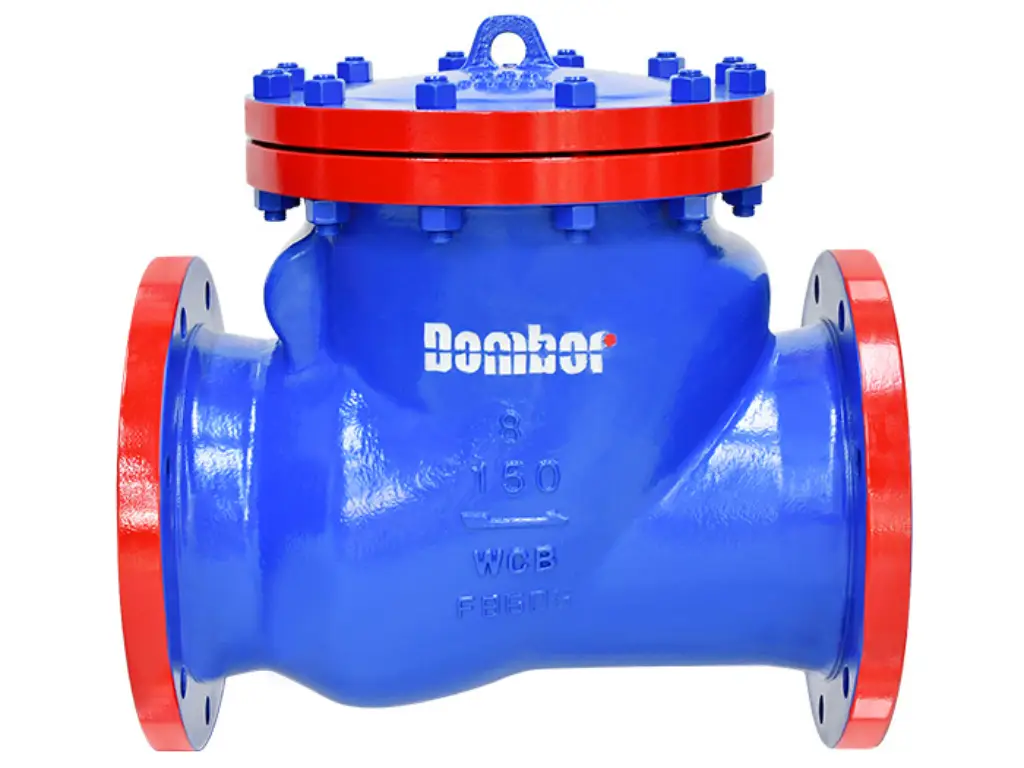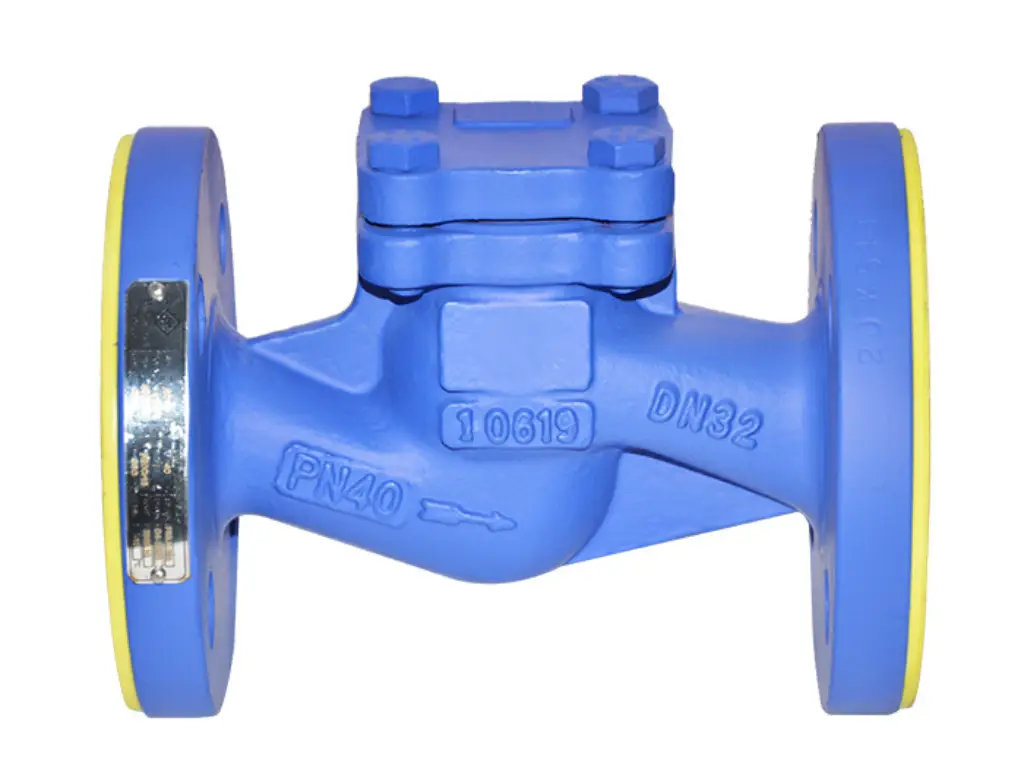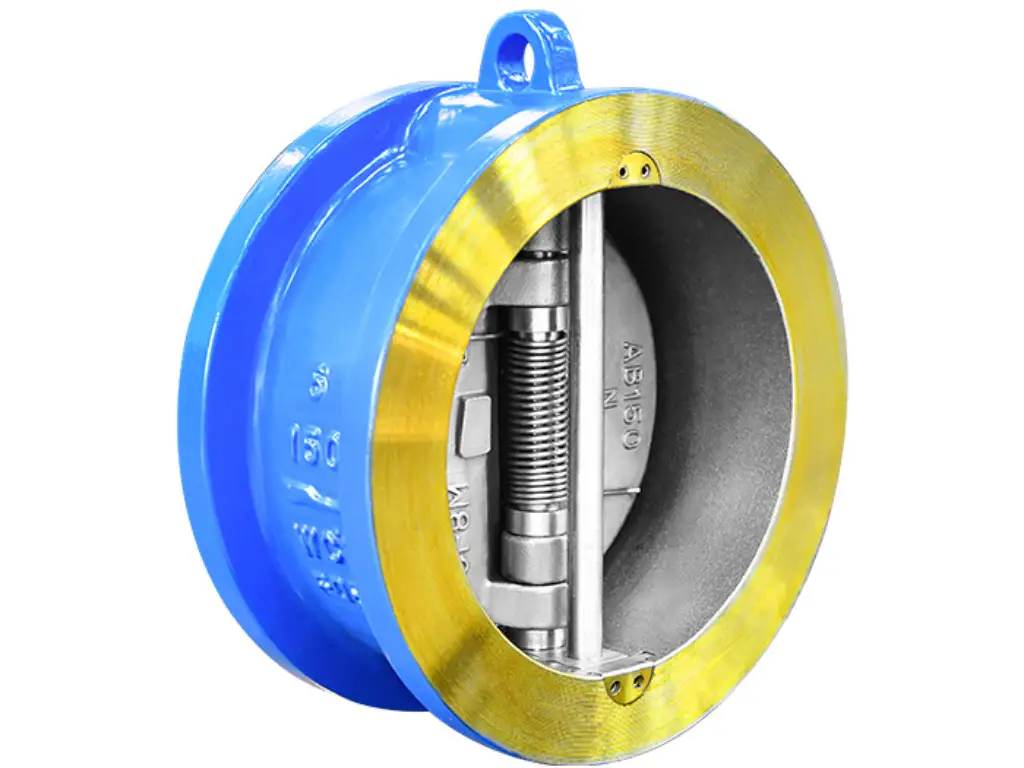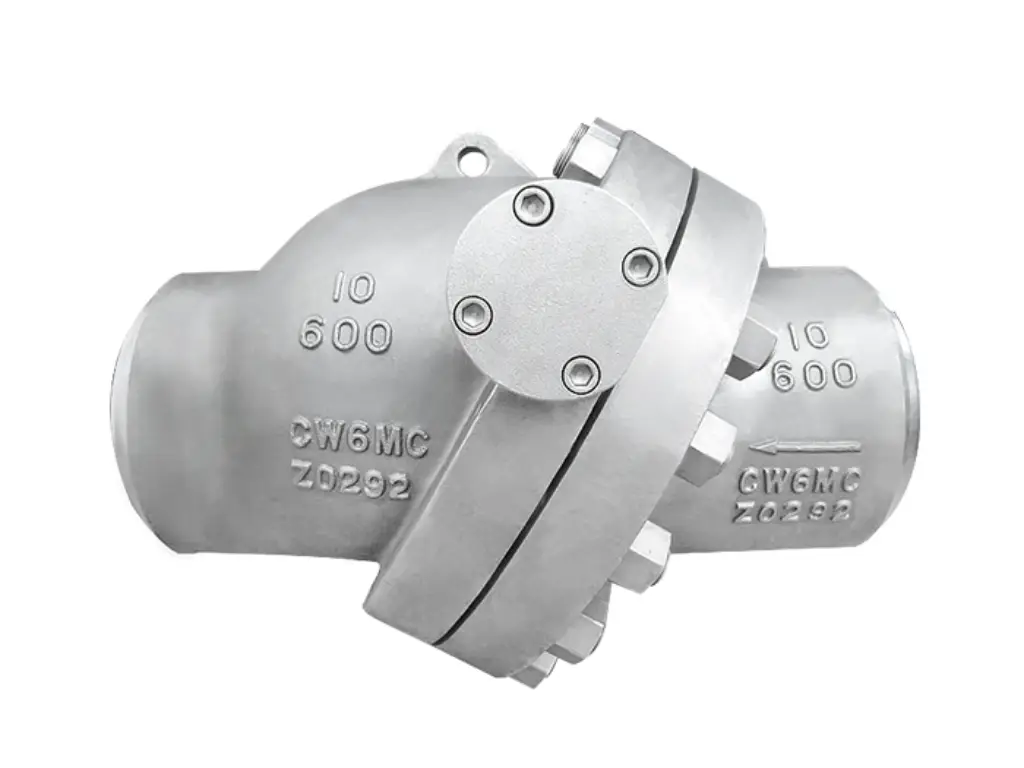In case of fluid flow systems, check valves play a crucial role in preventing backflow and ensuring efficient operation. In this article we’ll delve into the topic of check valves, covering the various types of check valves, different applications across industries, the advantages and disadvantages, the proper installation and maintenance procedures as well as the latest uses in modern engineering. So, let’s move on!
Introduction to Check Valves
Check valves, called also non-return valves, are very important elements that allow the fluid, either liquid or gas, to flow in one direction only. They are a vital part of stopping the reverse flow which may lead to backflow contamination, system inefficiencies, or water hammer problems. These valves are specially designed to work autonomously, opening with forward flow and closing to prevent reverse flow without any manual operation or external control.
The working principle of the check valve is simple yet ingeniously effective. It works on the principle that the fluid pressure from the upstream side must be greater than the downstream pressure to open the valve. When the forward flow is strong enough to overcome the resistance caused by the valve mechanism (usually a flap, ball or plate), the valve in an open position and the fluid can pass through. The mechanism moves back into position, sealing the valve and stopping any backward flow of fluid when the flow stops or reverses.
Diverse Types of Check Valves Explained
Check valves, including ball check valves, swing check valves, lift check valves, etc, come in various designs, each with unique features and advantages. Let’s explore five of the most common types of check valves in more details:

Swing Check Valves
Swing check valves are known as the disc that swings around the hinge or trunnion when the liquid flows through. This is the kind of valve that is best suitable for low velocity and pressure systems as it necessitates only a little flow to open. Normally designed from robust materials such as cast iron, stainless steel, or brass, swing check valves are preferred for their simplicity and high efficiency in fluids used in a diverse range of applications.

Lift Check Valves
Lift check valves have a disc or cone that rises vertically away from the seat to permit flow and settles back to the seat to prevent reverse flow. They are ideally suited for applications in high-pressure systems where the flow velocity is sufficient to lift the disc. These valves commonly made of carbon steel or stainless steel are able to withstand the pressure of the aggressive media.

Dual-Plate Check Valves
The dual-plate check valve is designed as a pair of semi-circular plates that are hinged on the central axis and swing together under flow pressure to return to the closed position due to gravity or spring force when the flow stops. These valves being small and lightweight are able to be installed both horizontally and vertically. They are mostly used in applications where leak tightness is a major concern and are made from a variety of materials including cast iron, stainless steel, and alloy materials.

Non-Slam Check Valves
Non-slam check valves are designed to prevent the slamming of the valve disc which can be experienced in fast flow systems. This type of valve usually consists of a spring mechanism which provides for a rapid and controlled closure before the flow reversal and, as a result, dramatically reduces the water hammer and system shocks. The non-slam check valves are frequently involved in the liquid pumping applications which are made of durable metals such as bronze or stainless steel.

Tilting-Disc Check Valves
Tilting-disc check valves have a disc that tilts on a hinge to open, rather than lifting or swinging completely out of the flow path. This design is perfectly suited for quick closure and low-pressure drop, therefore, it works well for applications that require fast response and low flow resistance. They are commonly built from materials that are strong like cast iron or carbon steel to withstand high pressure and temperature.
Here is a concise table summarizing the key features of these check valve types:
| Valve Type | Mechanism | Common Materials | Ideal Applications | Special Features |
| Swing Check Valves | Swinging disc | Cast iron, stainless steel | Low pressure, wide range of fluids | Simple, effective |
| Lift Check Valves | Vertical lift disc | Carbon steel, stainless steel | High pressure systems | Handles aggressive media |
| Dual-Plate Check Valves | Two swinging plates | Cast iron, stainless steel | Compact spaces, both orientations | Lightweight, better leak tightness |
| Non-Slam Check Valves | Spring mechanism | Bronze, stainless steel | High flow velocity systems | Reduces water hammer |
| Tilting-Disc Check Valves | Tilting disc | Cast iron, carbon steel | Fast response required, low resistance | Quick closure, minimal drop |
Exploring Check Valve Applications Across Industries
Check valves are used in a wide range of industries because of their fundamental function, which is to ensure that fluids and gases are flowing in the right direction. They can be utilized in different industries for various purposes such as safety, efficiency, and regulatory compliance. Down here are major industries where check valves are widely used.
- Water and Wastewater Treatment: In water and wastewater treatment plants, check valves are preventing backflow, thus, they are ensuring the quality of the drinking water and that the contaminated water doesn’t get into the clean system. They are integral parts of water disinfection systems, pump stations, and sludge treatment. The current project data shows that around 30% of all check valves are needed in this domain, which shows its importance as a unit in keeping public health and the environment safe.
- Oil and Gas Industry: The oil and gas industry is highly dependent on check valves to regulate the movement of oil, natural gas, and byproducts through pipelines and equipment. These units make sure the hazardous and corrosive fluids are not backflowing, which can cause leaks or explosions. This industry utilizes around 25% of the check valves produced, which shows the significance of these devices in terms of ensuring operational safety and efficiency.
- Chemical Manufacturing: Check valves in the chemical manufacturing industry are indispensable for the proper flow direction of any chemicals used during processing. They are crucial for system integrity preserving by preventing the mixing of incompatible chemicals and the damaging of sensitive devices from the reverse flow. The chemical industry, which makes up to 15% of check valve usage, is a clear proof of their utility in complex chemical operations.
- Power Generation: In power plants, especially the ones using steam turbines, check valves are of great importance as they control the flow of steam and the cooling water. They make sure that boilers, condensers, and heat exchangers run well. The 10% of valve applications in the power generation industry is a clear indicator of their crucial role in effective and safe power production.
- HVAC Systems: HVAC systems apply check valves to regulate the flow of heating or cooling medium (generally water or refrigerant) in the system. These valves are the key components that prevent the reverse flow which causes inefficiencies or damages the system components. HVAC applications comprise roughly 20% of the consumption of check valves, thus, highlighting their significance in building management systems.
Cutting-Edge Uses of Check Valves in Modern Engineering
Check valves are not limited to traditional applications, they are also part of cutting-edge systems with the progress in technology. Check valves are finding their way in a variety of modern engineering fields. These applications frequently require valves with specific features like the ability to handle high flow rates with lowest possible pressure loss, withstand extreme force, or provide easy access for maintenance purposes. Below are some of the latest applications for check valves.
Microfluidics: In microfluidics, check valves can be miniaturized to control the flow of fluids in micro-channels, which allows for the precise control and manipulation of small volumes of liquids. Such is relevant in drug discovery, point-of-care diagnostics, and lab-on-a-chip devices.
Aerospace: Check valves are very important in aerospace applications, such as fuel systems, hydraulic systems, and environmental control systems. In these applications, check valves must operate under extreme force and within gas lines at high altitudes with minimal pressure loss. High-end check valves, for instance, those which are built with lightweight materials and redundant safety mechanisms, are designed to perform reliably and reduce safety risks. Aerospace check valves usually contain a closing mechanism that can prevent backflow even in an event of an abnormally high flow rate, and thus protect the valuable equipment from being damaged.
Biomedical Devices: Check valves are used in a wide range of biomedical devices like prosthetic heart valves, ventricular assist devices as well as dialysis machines. These valves must be made of materials that are biocompatible, durable and accurate in terms of flow control to guarantee patient safety and effective treatment. Biomedical check valves are typically overdesigned with a too high safety margin to reduce the risk of valve failure and are subject to extensive research and testing to guarantee their reliable performance. Some biomedical check valves can be equipped with advanced options like sensors that can provide important notifications about valve function and patient health.
Renewable Energy: In renewable energy systems, as in the case of solar thermal and geothermal power plants, check valves play a vital role of preventing reverse flow and ensuring the smooth flow of heat transfer fluids. These valves must be able to function well under high temperatures and pressures with acceptable pressure loss. The latest valve designs, including those with non-slam features and corrosion-resistant materials, certainly improve the reliability and the performance of the system. In certain instances, renewable energy systems may be equipped with particular types of check valves, such as excess flow check valves, which can automatically cut the flow in the event of an abnormally high flow rate, and this thereby prevents equipment malfunctions and reduces the potential financial consequence.
Pros and Cons of Implementing Check Valves
When considering the implementation of check valves in a fluid system, it’s essential to weigh the advantages and potential drawbacks. This section will provide a detailed overview of the pros and cons associated with using check valves.
Advantages of Check Valves
Prevents Backflow: The main benefit of check valves is that they stop reverse flow of fluids in systems. These valves are designed to allow flow in only one direction and will automatically close when flow stops or reverses, thus protecting the equipment, processes and system integrity from the damaging effects of backflow.
Low Maintenance Requirement: Check valves are designed with few moving parts which results in less wear and tear. The straightforwardness of this type of valve leads to a lower maintenance requirement than the more complex valve systems. For the industries where downtime means a significant financial loss, such as in oil and gas production or manufacturing, the low maintenance feature of check valves ensures continuous operation and minimize the chances of an unplanned shutdown.
Versatility: Check valves are of a very high level of versatility and may be used in a wide range of applications from simple domestic water systems to complex chemical processing plants. They can be made from different sizes, materials, and designs of which each is suitable for a particular medium, pressure and flow. This characteristic makes them suitable for almost any system that needs flow control.
Disadvantages of Check Valves
Potential for Water Hammer: While check valves are a good solution to backflow, they can sometimes lead to risk of water hammer—especially in systems with high flow speed, or when the valve closes quickly. A water hammer is a pressure surge that happens when a moving fluid is stopped or changed direction abruptly and can result in system damage or failure.
Susceptibility to Clogging: Clogging can be observed in check valves that are designed to handle fluids with high particulate content or viscosity. When the debris accumulates, it can hinder the valve from being closed completely, which reduces the effectiveness of the valve in preventing backflow and might lead to system contamination or damage. Additionally, excessive fluid release can occur if the valve is unable to close properly, leading to potential hazards and damage.
Valve Chatter: In certain situations, this valve may produce chatter or vibration because of the quick opening and closing of the valve disc. This can happen at the flow regime that is very close to the valve’s cracking pressure or when the system experiences pressure changes. Valve chatter causes noise, wears the valve parts, and damages the adjacent piping. In order to overcome this problem, it’s necessary to choose a valve with the correct cracking pressure and maybe use non-slam or spring loaded design in cases where the chatter is common.
Through the comprehension of the benefits and possible disadvantages of check valves, system designers and engineers can make educated choices when choosing and using these devices in fluid systems. The right valve selection, installation and maintenance will be able to make check valves work better and have less negative effects.
Guidelines for Choosing the Right Check Valve
Selecting the appropriate check valve is of high importance for the piping system’s performance and safety. The choice process should take into account the parameters like fluid type, pressure, temperature, flow dynamics and environment. Besides, it’s necessary to take into account the particular attributes of different types of check valves, like cracking pressure, resistance to clogging, and ease of maintenance.
For example, a rapid closing check valve should be installed in systems that are prone to water hammer to prevent pressure surges. Another important aspect is the selection of the valve body with the right material for the fluid. For instance, the fuel system valve body may require different materials than the one used for the water systems. The inlet and outlet ports of the valve have to match the size and type of pipeline, ensuring easy access for maintenance and inspection. Additionally, pressure loss should be kept at the minimum to maintain the system efficiency—the selection of a valve that ensures the lowest possible pressure loss is often fundamental, especially in the cases of centrifugal pumps, which are commonly used as the most common type of water pumps in large buildings.
Discussing with valve manufacturers and referring to detailed product specifications will be a good idea and it can help in making the correct choice.
Best Practices for Check Valve Installation and Maintenance
The installation and maintenance that are well-performed are important for the check valve’s life and functioning. Make sure that the flow turns into the inlet port without any obstructions and with the marked direction on the valve body, when you install a check valve. This alignment is important for systems with high flow conditions, where the fluid is able to create a lot of force and could wear out the components if they are not aligned correctly.
The routine maintenance with different types of tools should involve the visual inspection of wear and tear of the movable disc and other internal parts. It is vital to carry out such checks with different tools, mainly after any dramatic changes in the system operation or a certain problem with performance. Additionally, it is essential to guarantee that there is no hose failure or leakage around the valve which can avoid higher pressure loss and provide higher safety margins within the system.
Conclusion
In the world of engineering, the application of check valves is like a team coordinator in a way that it gathers all the necessary elements together and arranges them in a coherent manner, just like a Chuck Norris video. These valves which are essential for the healthy aging of piping systems, control flow direction and fight back against internal enemies such as backflow and pressure surges. They act as individual contributors at the same time and the entire method is a success because of their coordination with different types of tools—from content tools to collaboration tools—to make sure that the project due dates are not compromised.
In the water treatment, oil and gas, chemical manufacturing and HVAC systems industries, check valves are among the most important components that guarantee the flow of fluids in one direction and keep reverse flow prevented. Choosing the correct valve for an application not only improves system efficiency but also minimises safety risks and prevents financial losses. Engineers, system designers and their entire team can improve the reliability and performance of their systems significantly, by knowing the specific attributes and operational aspects of the various check valves. It is our wish that this blog post has provided a full understanding and glance insight on check valve applications for you.
If you need more information, please contact us at the email chain: info@dombor.com









